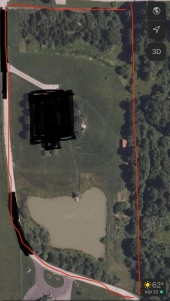posted 8 years ago
I do precisely what you're planning on doing and I can share my thoughts and observations. I have one grounding location with the solar fence energizer right next to it. I purchased two 100ft lengths of wire that goes from the energizer to the fence, where ever it may be about my yard, with those spring loaded battery charger style clamps soldered at each end for easy connect and disconnect. The important factor in the connection wire from energizer to the fence is it should have a 10,000 volt jacket (insulation) on it. Most all wire you buy at the hardware store comes wrapped in a 600 volt jacket. If the 600 volt jacket is laying on the grass going over to the fence, the electric pulse will arc through the jacket to the ground, nullifying any hot zap at the fence. A 10,000 volt jacket prevents this and lets all the pulse energy get to the fence. You *can* use 600 volt jacketed wire, but you must use something to suspend it in the air so it does not touch the ground, and I have found moving a bunch of sticks suspending a wire each time I move my fence is just more work and to be a pain and it is much easier to move the wire about and leave it laying in the grass. I also have a small piece of like 2 inch pvc pipe for the bare copper clamps to rest on where my two 100ft wires connect otherwise those will arc to the ground as well if they get too close. One more thing, my fence kit came with a galvanized 4 foot ground rod. I purchased a 6 foot copper plated ground rod at the hardware store, and used both, with the two connected by a length of bare copper ground wire. I added the copper one because the galvanized rod will slowly corrode, resulting in a poor ground, which means a less hot fence, even though the same pulse energy may be going through the fence. One key to using multiple ground rods effectively is they need to be a minimum off 6 feet apart. I've been using this technique for several years now and it works well for me. If you have more questions, I'm happy to help.
"Study books and observe nature; if they do not agree, throw away the books." ~ William A. Albrecht





